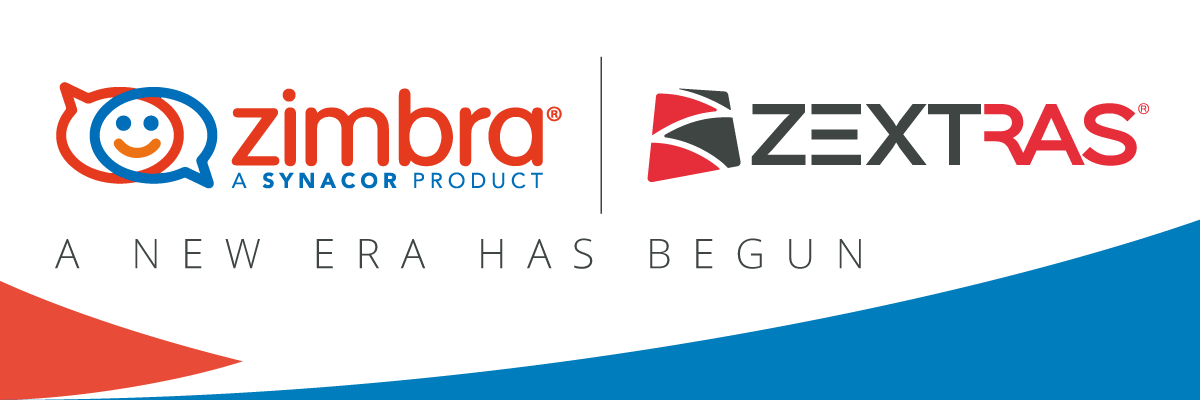Hierarchical address book release, updated Zimbra Docs and other new features in Zimbra 8.8.12
Just recently, the release of Zimbra Collaboration Suite 8.8.12 took place. Like any minor update, the new version of Zimbra does not contain any revolutionary changes, however, it boasts innovations that can seriously improve the usability of Zimbra in enterprises.

One of such innovations was the stable release of the Hierarchical Address Book. Recall that users of Zimbra version 8.8.10 and above could join the beta test of the Hierarchical Address Book. Now, after six months of testing, the Hierarchical Address Book has been added to the stable version of Zimbra and is available to all users.
')
The key difference of the Hierarchical Address Book from the usual Global Address List is that in the Hierarchical Address Book all contacts are presented not in the form of a simple list, but in a structured form based on the organizational structure of the enterprise. The advantages of this approach are obvious: a Zimbra user can quickly and conveniently find the contact he needs, not only by domain, but also by the unit in which he works and by his position. This allows the employees of the enterprise to communicate faster and, therefore, they will work more efficiently. The main disadvantage of the Hierarchical Contact Book is the need to maintain its relevance. Since staff shifts in enterprises are not uncommon, data in the Hierarchical Contact Book may become outdated faster than in the usual Global Address List.
After enabling the Hierarchical Address Book feature on the server, Zimbra users will be able to view and select contacts from the Hierarchical Address Book. In addition, it will appear to users as a source of contacts when selecting recipients of the letter. When you select it, a tree-like organizational structure of the enterprise will open, in which you can select one or several recipients.
Another major innovation was the improved compatibility of Zimbra Collaboration Suite with the Calendar, Mail and Contacts applications built into iOS and MacOS X. From now on, they can be automatically configured by directly downloading mobileconfig files. Users can find in the “Connected devices and applications” section of the Zimbra web client settings.

The new release received the code name Isaac Newton in honor of the great English physicist
Also, starting from version 8.8.12, Zimbra Collaboration Suite officially supports installation on the Ubuntu 18.04 LTS operating system. Support is still in beta, so installing Zimbra on this version of Ubuntu should be at your own risk.
A feature demanded by users like Zimbra Docs has gone through a redesign. From now on, Zimbra Docs demonstrates better performance, and it is now much more convenient to work with documents in it. A more detailed story about the updated Zimbra Docs wait in one of our future articles.
The good news will be the removal of the bug associated with the choice of the default calendar. The function that appeared in Zimbra 8.8.11, as it turned out, did not always work as it should. In particular, when adding a new event, when a user viewed one of his calendars, which is not used by default, the one that was designated as the default calendar was still selected automatically, although in fact it would be logical to automatically select the calendar being viewed . In the new version of Zimbra this annoying bug has been fixed.
In addition to those listed above, Zimbra 8.8.12 contains many other innovations and bug fixes. As always, you can download the new version of Zimbra Collaboration Suite on the official Zimbra website .

One of such innovations was the stable release of the Hierarchical Address Book. Recall that users of Zimbra version 8.8.10 and above could join the beta test of the Hierarchical Address Book. Now, after six months of testing, the Hierarchical Address Book has been added to the stable version of Zimbra and is available to all users.
')
The key difference of the Hierarchical Address Book from the usual Global Address List is that in the Hierarchical Address Book all contacts are presented not in the form of a simple list, but in a structured form based on the organizational structure of the enterprise. The advantages of this approach are obvious: a Zimbra user can quickly and conveniently find the contact he needs, not only by domain, but also by the unit in which he works and by his position. This allows the employees of the enterprise to communicate faster and, therefore, they will work more efficiently. The main disadvantage of the Hierarchical Contact Book is the need to maintain its relevance. Since staff shifts in enterprises are not uncommon, data in the Hierarchical Contact Book may become outdated faster than in the usual Global Address List.
After enabling the Hierarchical Address Book feature on the server, Zimbra users will be able to view and select contacts from the Hierarchical Address Book. In addition, it will appear to users as a source of contacts when selecting recipients of the letter. When you select it, a tree-like organizational structure of the enterprise will open, in which you can select one or several recipients.
Another major innovation was the improved compatibility of Zimbra Collaboration Suite with the Calendar, Mail and Contacts applications built into iOS and MacOS X. From now on, they can be automatically configured by directly downloading mobileconfig files. Users can find in the “Connected devices and applications” section of the Zimbra web client settings.

The new release received the code name Isaac Newton in honor of the great English physicist
Also, starting from version 8.8.12, Zimbra Collaboration Suite officially supports installation on the Ubuntu 18.04 LTS operating system. Support is still in beta, so installing Zimbra on this version of Ubuntu should be at your own risk.
A feature demanded by users like Zimbra Docs has gone through a redesign. From now on, Zimbra Docs demonstrates better performance, and it is now much more convenient to work with documents in it. A more detailed story about the updated Zimbra Docs wait in one of our future articles.
The good news will be the removal of the bug associated with the choice of the default calendar. The function that appeared in Zimbra 8.8.11, as it turned out, did not always work as it should. In particular, when adding a new event, when a user viewed one of his calendars, which is not used by default, the one that was designated as the default calendar was still selected automatically, although in fact it would be logical to automatically select the calendar being viewed . In the new version of Zimbra this annoying bug has been fixed.
In addition to those listed above, Zimbra 8.8.12 contains many other innovations and bug fixes. As always, you can download the new version of Zimbra Collaboration Suite on the official Zimbra website .
Source: https://habr.com/ru/post/446916/
All Articles